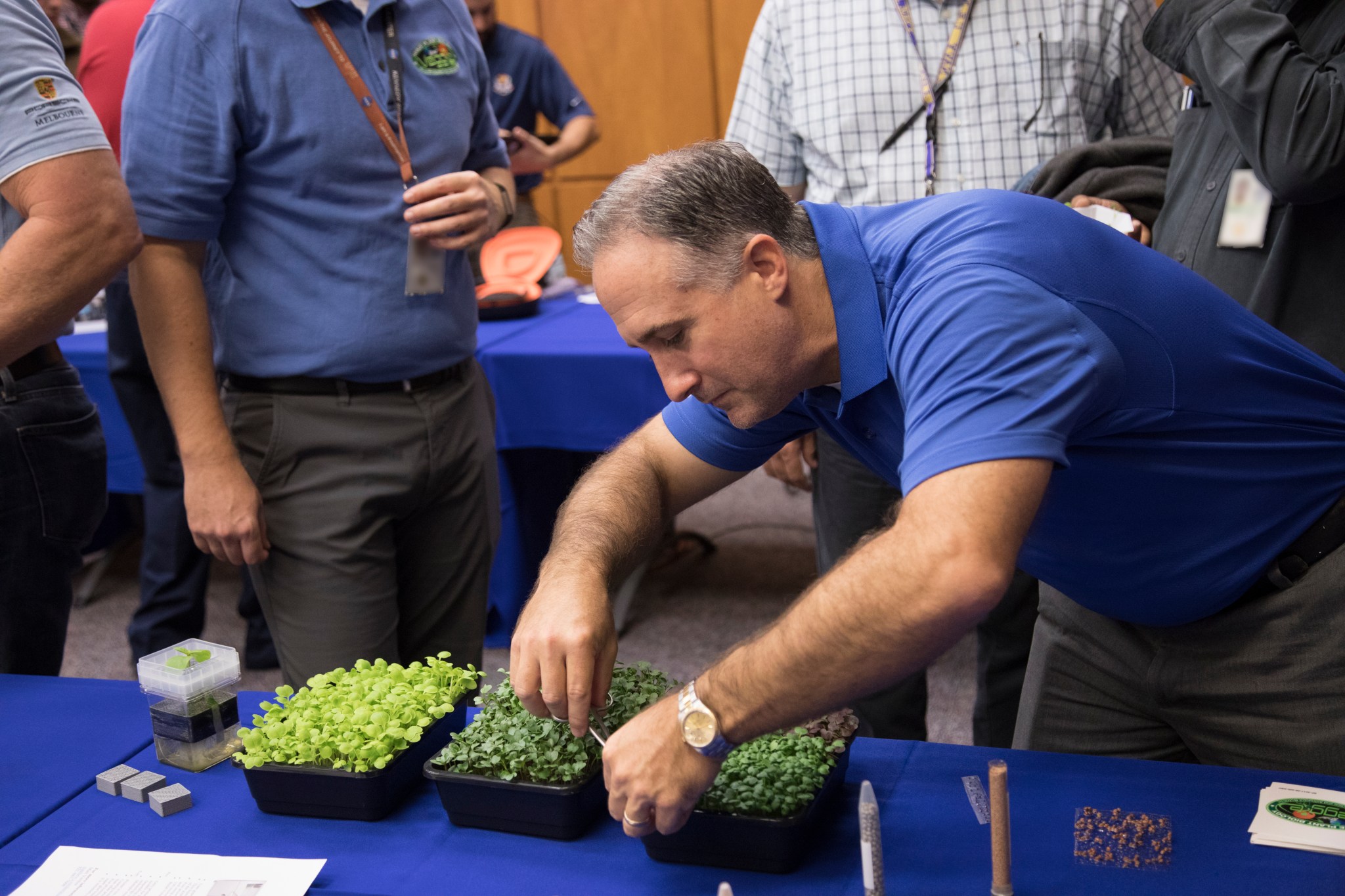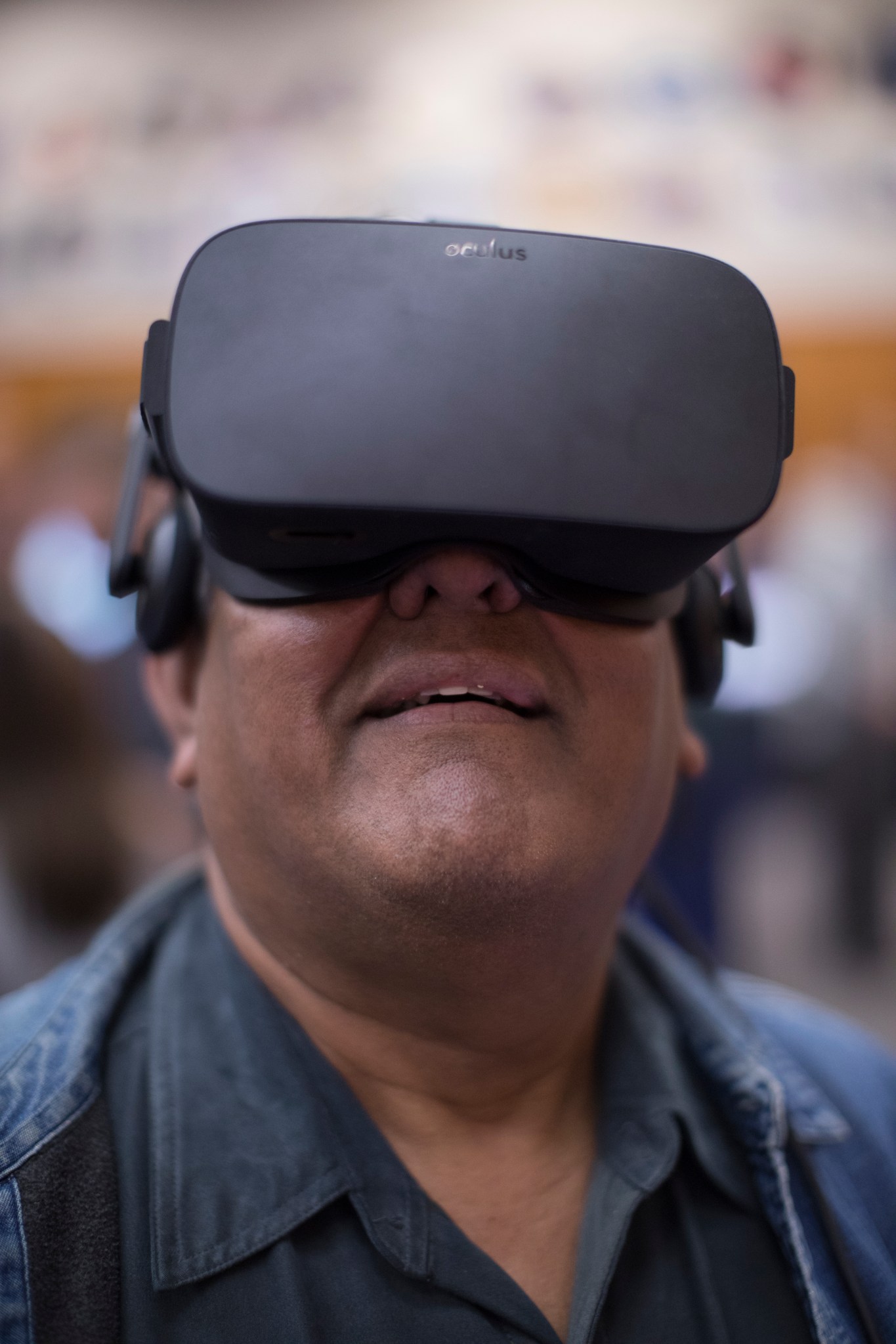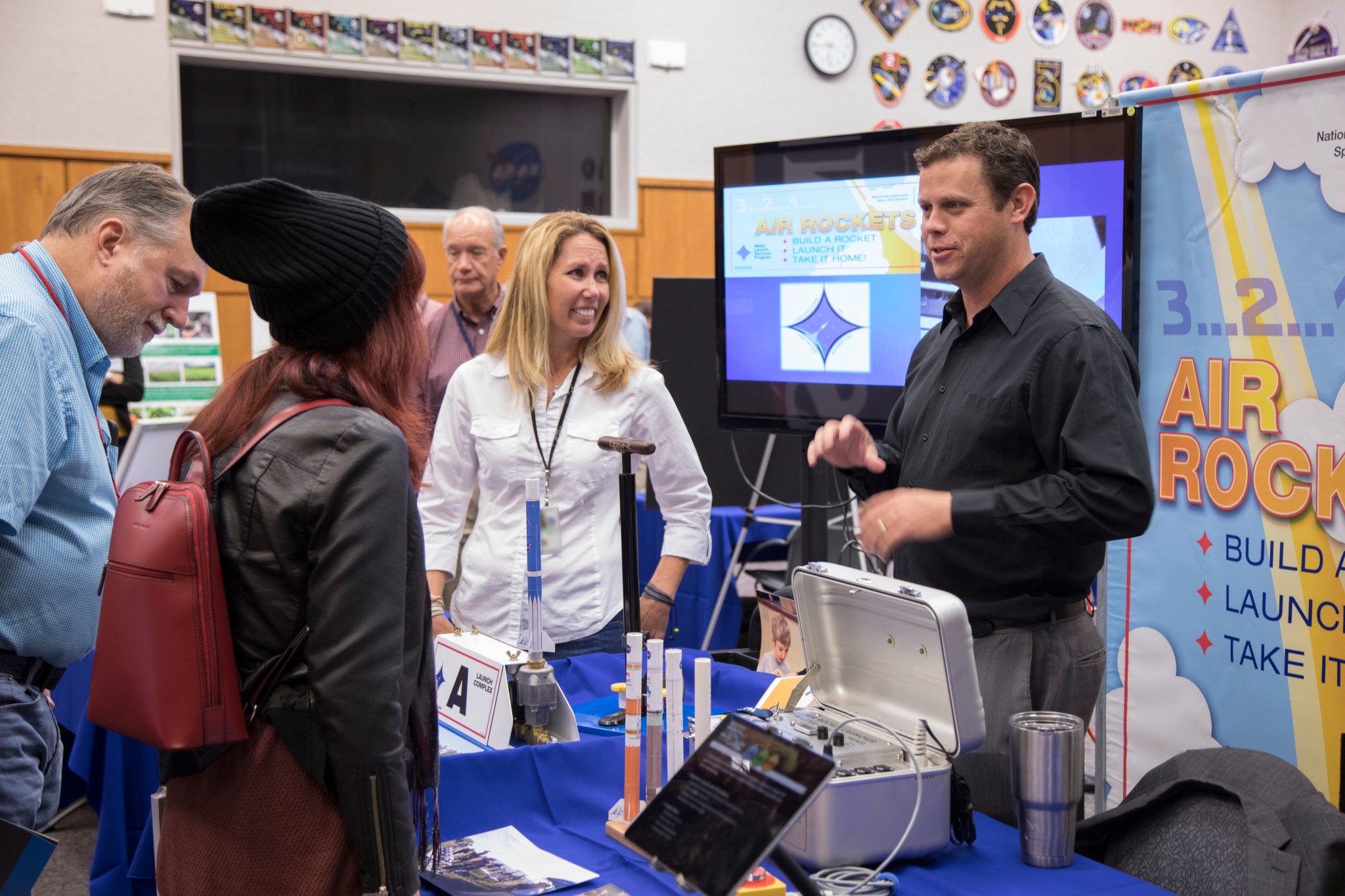Creation of new and innovative technologies to help advance NASA’s exploration capabilities is alive and well at NASA’s Kennedy Space Center in Florida. With a focus on future technologies, the center’s annual Innovation Expo kicked off Oct. 31 and continued through Nov. 1. It featured keynote presentations, the KSC KickStart Competition, several training opportunities and a showcase of new technologies being developed by engineers, researchers and scientists from around the spaceport.

“The events of the expo are a place where Kennedy employees can learn and explore the innovations of our center while making new connections for future discoveries,” said Meredith Reeves, event co-chairperson. Reeves is a management and program analyst in the Research and Technology Management Office within the Exploration Research and Technology Programs directorate.
Event co-chairperson Kelley Jones-McDowall, a propulsion engineer for the Launch Services and Commercial Crew programs, hopes that employees attending the events take back a new perspective or tool to their daily jobs that helps foster innovation throughout the center.
Daniel Coleman, editor-in-chief of NASA Spinoffs publication, shared NASA technologies through the decades, and how more than 2,000 NASA technologies have an everyday impact on people around the world.
While Kennedy Space Center is usually known for launching rockets, it also is home to many inventors. Many spinoffs have been developed right here at the spaceport.
One very practical technology is shock absorbers originally developed for the space shuttle that crossed over to become seismic dampers for wobbly bridges and also are used to help reduce the effects of earthquakes on buildings.
Emulsified Zero-Valent Iron, or EZVI, developed by Dr. Jacqueline Quinn, a NASA environmental engineer, removes pollutants from groundwater and is the most-patented NASA technology to date.
The aerogel composite blanket was developed by Dr. James Fesmire, senior principal investigator in cryogenics, for NASA for use as a barrier to the extreme temperatures that occur during rocket launches and affect spacecraft as they are exposed to high heat and severe cold. The technology crossed over to commercial applications for insulating millions of miles of piping and shipping vessels in the oil and gas industry. Consumer goods all over the world contain the material under various brand names. According to Fesmire, It is the lowest thermal conductivity insulation in the world.
Keynote speaker Bill Gerstenmaier, associate administrator for NASA’s Human Exploration and Operations Mission Directorate, packed the house as he discussed the agency’s concept for a deep space gateway – which would be a crew-tended outpost near the Moon.
Gerstenmaier discussed the innovative work underway for missions to the vicinity of the Moon, and future crewed missions to Mars. He acknowledged the role Kennedy would play in helping launch potential components of the deep space gateway, and called NASA’s Orion, Space Launch System and ground systems “the building blocks to human deep space exploration.”
During the annual KickStart competition, employees presented their proposals for seed money that could turn an innovative idea into an actual project in front of a panel of senior leaders. Criteria considered was innovativeness, relevance and impact to Kennedy, and the likelihood of success, value and sustainability. Ten winning proposals were announced and will share in a total of $40,000 of NASA funding to continue developing their projects.
The Innovation Showcase featured more than 20 new and developing technologies ranging from virtual reality software programs, to 3-D printed parts designed to collect and deposit moon dirt more efficiently, to an outreach activity for children to build and launch small rockets.
“We know small steps lead to giant leaps and it’s not just major innovations that have marked and will continue to mark our success,” said Kennedy Chief Technologist Barbara Brown. “It’s also the small, everyday innovations – the results of asking and answering questions such as, Is there a better way? A faster way? A way that reduces mistakes? It is this kind of innovation that will enable future NASA missions and bolster U.S. competitiveness.”





























